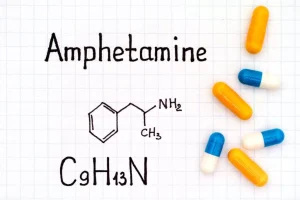Effects of Alcohol on Each Part of the Body

Alcohol use disorder (sometimes called alcoholism) is a common medical condition. In this disorder, people can’t stop drinking, even when drinking affects their health, puts their safety at risk and damages their personal relationships. Studies show most people can reduce how much they drink or stop drinking entirely.
Tips for Reducing Alcohol Consumption

The test is free, confidential, and no personal information is needed to receive the result. If you drink more alcohol than that, consider cutting back or quitting. Eating disorders aren’t solely motivated by a desire to be thinner. Perfectionistic tendencies and a need to control chronic stress can also trigger disordered behaviors.
Risk Factors Associated with the Development of an Alcohol Use Disorder
Depending on how often you drink and how much, you may need support from a healthcare professional if you want to stop drinking. When you stop drinking, you might notice a range of physical, emotional, or mental health symptoms that ease as soon as you have a drink. People who drink heavily over a long period of time are also more likely to develop pneumonia or tuberculosis than the general population.
- The Nomogram model is used to obtain the corresponding scores for each variable and the sum of these scores were recorded as the total score, with the highest score corresponding to 100 points.
- If you feel that you sometimes drink too much alcohol, or your drinking is causing problems, or if your family is concerned about your drinking, talk with your health care provider.
- Alcohol withdrawal can be difficult and, in some cases, life threatening.
Chris Pratt Stunt Double Tony McFarr’s Cause of Death Revealed
Thirdly, this model obtained good prediction accuracy by cross-validation of the model, indicating strong internal validity of the results. Fourth, we also found a negative interaction between CVD and insulin use. Finally, we provide a nomogram tool that https://ecosoberhouse.com/ allows simple assessment of the 3, 5, and 10-year all-cause mortality risk in diabetes, which can be easily and time-effectively applied in clinical settings. A BAC of 0.09% to 0.25% causes lethargy, sedation, balance problems and blurred vision.
- Experts continue to debate the benefits and risks of drinking and passionately argue over whether moderation or complete abstinence is the best option for those who struggle with alcoholism.
- This makes speech and coordination — think reaction time and balance — more difficult.
- During this time, a person may do things that they do not remember later.
- Excess alcohol use can also impair nutrient absorption in the small intestine and increase the risk of malnutrition.
- Slips can be fueled by withdrawal symptoms, mental health challenges, and drug-related cues, such as spending time with old drinking partners or visiting old drinking locations.
- Any amount of alcohol can diminish your judgment and functioning, and even low or moderate alcohol use can have harmful effects on different organs.
- Group meetings are available in most communities at low or no cost, and at convenient times and locations—including an increasing presence online.
Risk factors for alcohol use disorder
We can all experience temporary and long-term effects of alcohol, depending on our consumption. This article discusses the physiological and psychological effects of alcohol and how to change your drinking habits. In addition, risk factors are cumulative, such that having more than one risk factor why do people become alcoholics significantly increases the probability that one may develop a specific disease or disorder. Some people prefer to try cutting back or quitting on their own before committing time and money to rehab. And there are a few approaches that can identify and combat drinking at an early stage.
- Calibration curves for 3, 5, and 10-year mortality risk prediction for diabetes.
- Ways that your standard hangover cures won’t even begin to touch.
- Like all addictions, alcohol use disorder is linked to a complex combination of biological, social, and psychological factors.
- Steatotic liver disease used to go by the name fatty liver disease.
- These brain changes contribute to the compulsive nature of addiction, making it difficult to abstain from alcohol.
- An example would be a father who falls asleep on the couch after having several drinks three or four days a week, missing out on time with his kids and wife.
Effects of Alcoholism on the Body
